
It has been 23 years since that “last night” when the coalition force led by the United States responded to Iraq’s invasion of Kuwait by firebombing Baghdad. How many wars have gone down since?
I arrived in Kuwait City in late May 1991 on assignment for the Village Voice to photograph the aftermath of Operation Desert Storm. The oil fires were still burning and would continue to burn for six months more. The acrid smell stung the eyes, and the petroleum fumes sucked the oxygen and light out of the air. Beautiful from a distance, the fires grew ominous as one got closer. With furious, fiery tongues and the deafening roar of hell, the earth seemed eager to swallow us up.
Some floors of our hotel were bombed out, and the rooms had been looted. A freshly painted portrait of George H.W. Bush adorned the lobby, and the sign above it read “Grand Ballroom.” Parts of Kuwait City were in rubble. There were mines in the bay, and the polluted air turned day into night. Yet life was trying to return. A lone fisherman stood at the edge of the water, and I saw lovers sitting on the rocks gazing at the sun as if it was a full moon.
All around me lay a broken world, silent and emptied of bodies: a memorial to the thousands of dead and wounded, mangled and incinerated on the “Highway of Death.” We tiptoed between overturned vehicles, rags, tins and an occasional shoe. Pages of a book fluttered in the breeze.



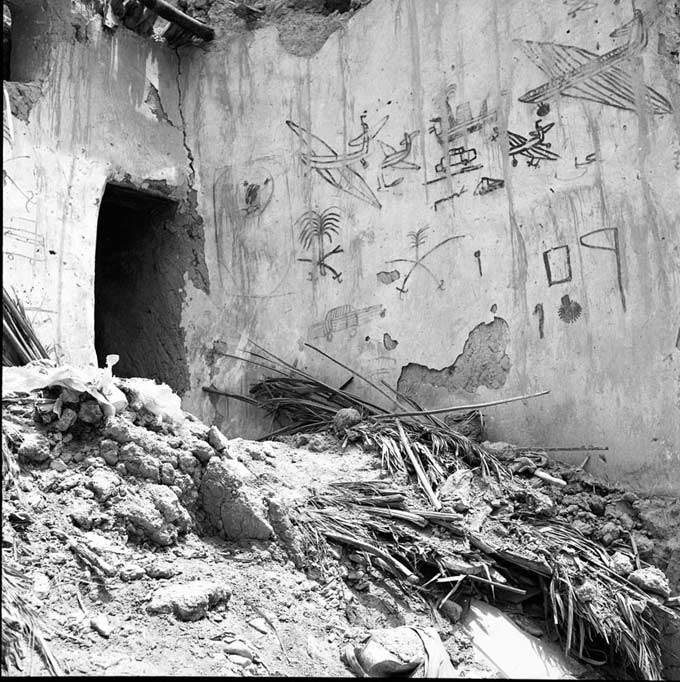
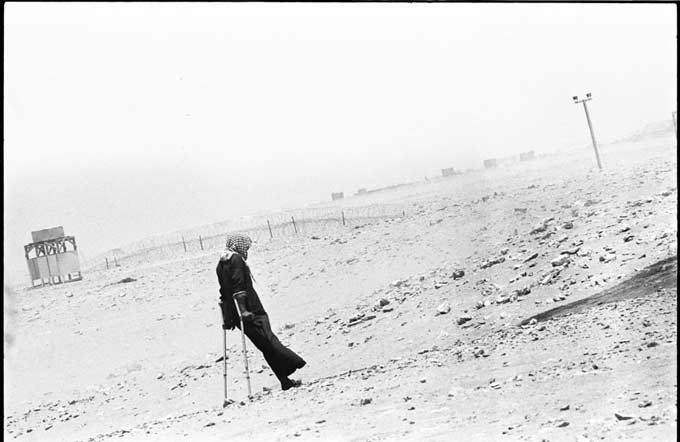

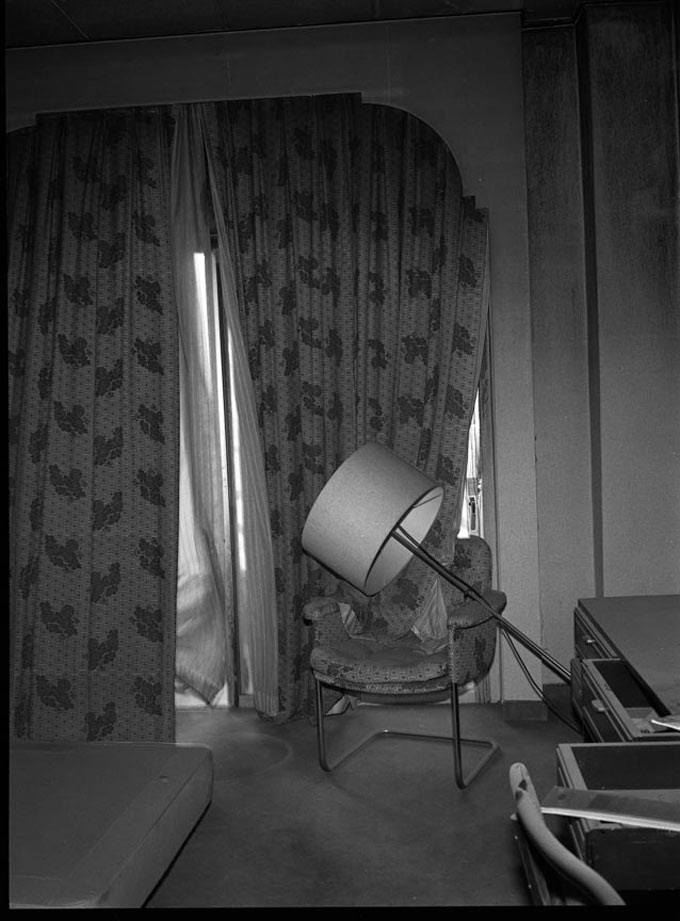
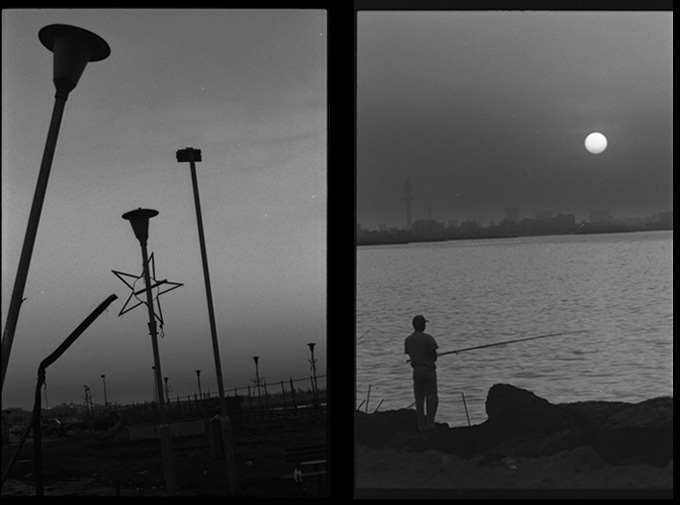

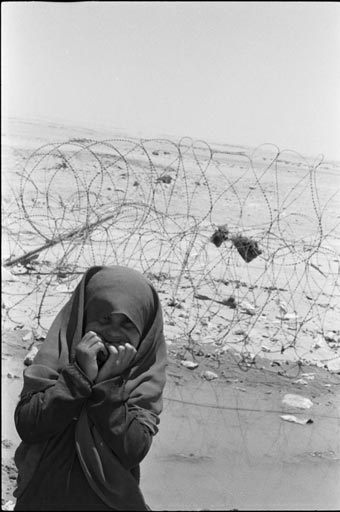
In the Saudi Desert, as far as the eye could see, there was only sand. Surrounded by barbed wire, Iraqi refugees stood in line, waiting for rations to be brought in by air.
Men, women and children looked to the sky—for food, for water and for a future. We landed. As it often happens, we journalists inspire a sliver of hope. This time we brought pouches of water. We listened to their horrific stories, took notes and photographs, and promised to let the world know that they were stranded. But all too soon, we climbed back into the helicopter and disappeared in a cloud of dust.

All images copyright Sylvia Plachy.
This piece, commissioned by Creative Time Reports, has also been published on The New Yorker‘s “Photo Booth” blog, where it includes additional photographs by Sylvia Plachy.

